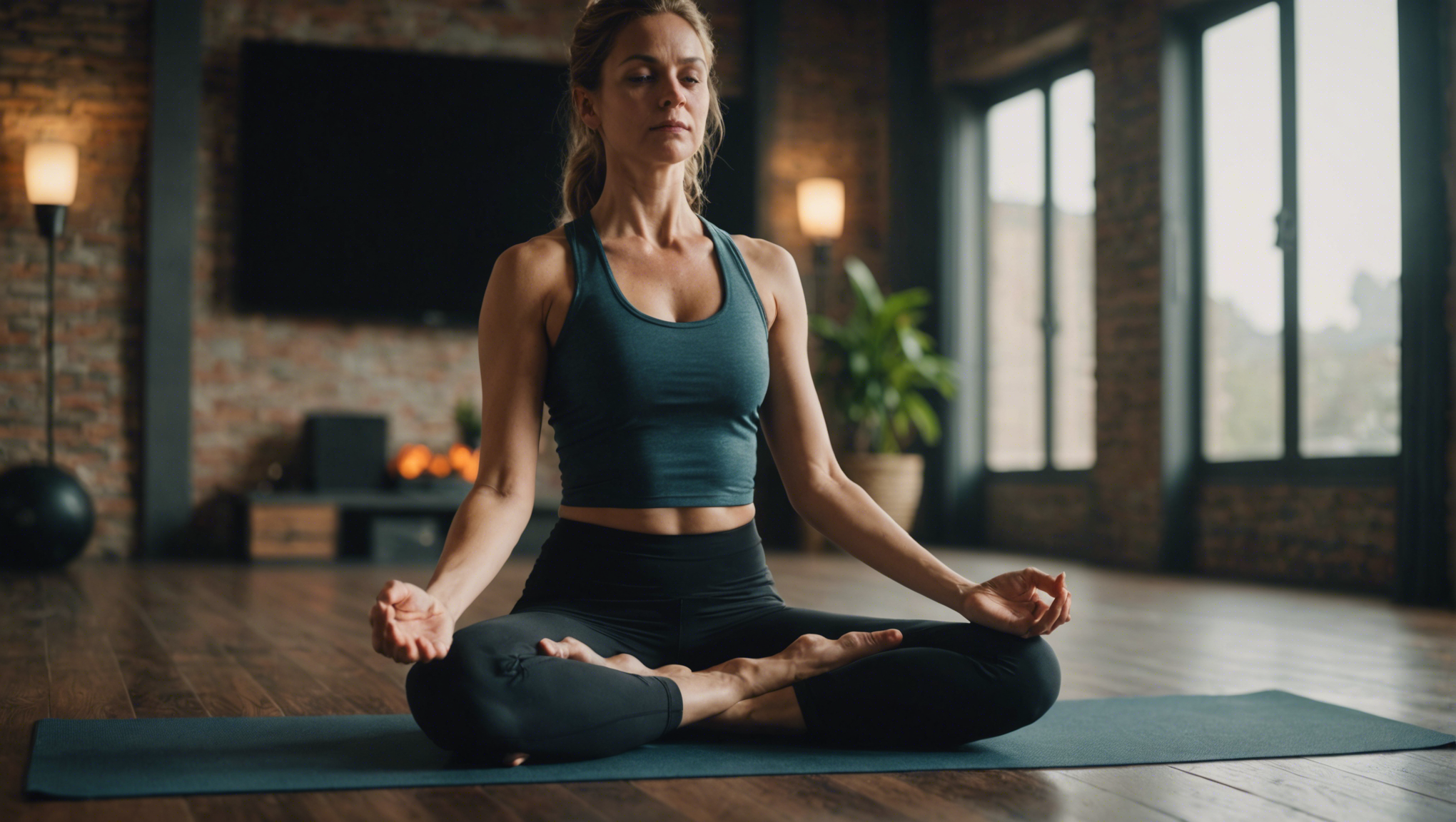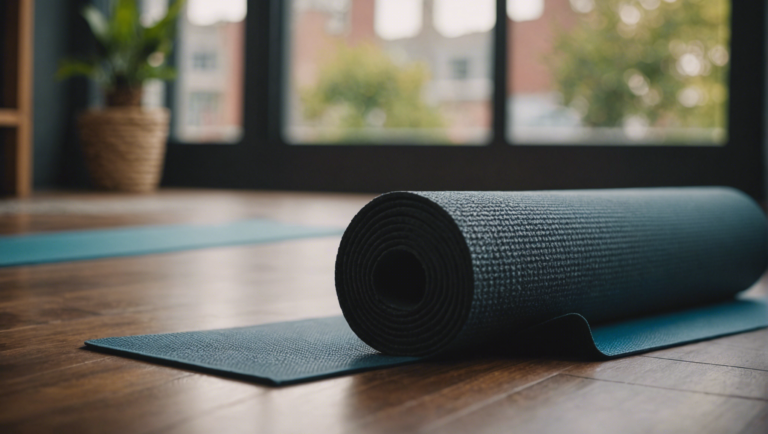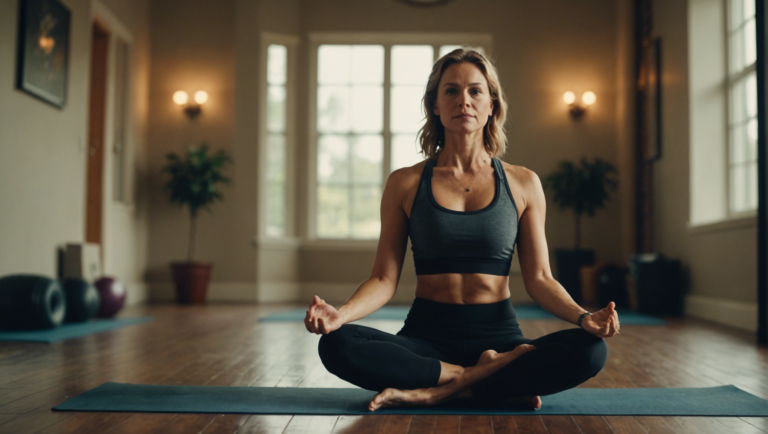Does Yoga Provide Relief For Back Pain?
The effectiveness of yoga in relieving back pain
Yoga, a holistic and ancient practice, has transcended its cultural origins to become a global phenomenon, revered not only for its ability to enhance mental wellbeing but also for its therapeutic effects on physical health. Among the myriad of health benefits it offers, its efficacy in alleviating back pain stands out, a common ailment that affects millions worldwide. Delving into the nuances of how yoga serves as a panacea for back pain sheds light on its potential as a non-invasive, accessible, and effective remedy.
The Interplay Between Yoga and Back Health
The mechanics of back pain are complex, often rooted in issues such as poor posture, muscle imbalances, and stress. Yoga addresses these underlying causes through its comprehensive approach that combines physical postures (asanas), breath control (pranayama), and meditation. These elements work synergistically to improve posture, enhance flexibility, strengthen back muscles, and reduce stress levels, all of which are pivotal in mitigating back discomfort.
Scientific Evidence Supporting Yoga’s Efficacy
A growing body of research underscores the effectiveness of yoga in the management of chronic back pain. A landmark study published in the Annals of Internal Medicine found that participants who engaged in a yoga regimen experienced significant reductions in pain and improved function compared to those who received conventional care. Such findings are corroborated by numerous other studies, highlighting yoga’s role in alleviating pain, enhancing mobility, and improving the quality of life for those with chronic back issues.
Tailored Yoga Poses for Back Relief
Not all yoga poses are created equal, especially when it comes to alleviating back pain. Practices that focus on gentle stretching, strengthening, and aligning the spine are particularly beneficial. Poses like Marjaryasana-Bitilasana (Cat-Cow Stretch), Balasana (Child’s Pose), and Adho Mukha Svanasana (Downward-Facing Dog) have been widely acknowledged for their positive impact on back health. These poses, when performed regularly and correctly under the guidance of a skilled instructor, can significantly diminish back pain and enhance spinal health.
Mindfulness and Breathwork
Yoga transcends physical exercise, incorporating mindfulness and breathwork that collectively promote relaxation and stress relief. Stress is a known aggravator of back pain, and the meditative aspects of yoga play a crucial role in its management. Techniques such as deep breathing and mindfulness meditation foster a state of relaxation, reduce stress hormones, and alleviate muscle tension, contributing to the reduction of back pain.
Navigating the Path to a Pain-Free Back through Yoga
For individuals seeking relief from back pain through yoga, starting with beginner-friendly, gentle practices is advisable. Engaging with a certified yoga instructor who has experience in dealing with back pain can ensure the practice is safe, effective, and tailored to individual needs. Additionally, consistency is key—regular practice amplifies the benefits, leading to long-term improvements in back health.
A Holistic Outlook on Managing Back Pain
The journey towards overcoming back pain through yoga is emblematic of a holistic approach to health and wellness. It underscores the importance of treating not just the physical symptoms but also addressing the mental and emotional factors contributing to pain. This multifaceted approach aligns with the principles of integrative medicine, which advocates for combining conventional medical treatments with alternative therapies like yoga for a more comprehensive care model.
Yoga emerges not merely as an exercise but as a powerful therapeutic tool in the battle against back pain. Its benefits, substantiated by scientific research and centuries of anecdotal evidence, paint a compelling picture of its role in fostering back health. As society continues to grapple with the widespread issue of back pain, yoga offers a beacon of hope, embodying the convergence of tradition, science, and holistic health. Engaging in yoga is not just about alleviating pain; it’s a commitment to a healthier, more balanced lifestyle that nurtures the body, mind, and spirit.
Understanding the causes of back pain and how yoga addresses them
Back pain, a common malady affecting individuals globally, has multifaceted causes ranging from posture, lifestyle factors, to deeper structural issues within the body. Yoga, an ancient practice with roots extending over thousands of years, offers a holistic approach to addressing the underlying causes of back pain through its diverse range of poses, breathing techniques, and mindfulness practices.
Exploring the Root Causes of Back Pain
The genesis of back pain can often be traced to our modern lifestyle, where prolonged sitting and lack of physical activity lead to weakened back muscles and poor posture. Stress, another ubiquitous aspect of contemporary life, contributes significantly to back pain. It manifests physically, causing muscles to tense and exacerbate pain. Furthermore, back pain can also be a symptom of underlying health issues such as arthritis, osteoporosis, or sciatica.
The Holistic Approach of Yoga to Back Pain
Yoga approaches the body as an interconnected whole. It emphasizes balance, alignment, and the strengthening of muscles, which are crucial for supporting the spine. Specific yoga poses target the spine, stretching and strengthening the muscles surrounding it. This not only alleviates current pain but also contributes to the prevention of future back issues.
Yoga Poses and Their Benefits for Back Pain
Yoga offers a panacea of poses known for their efficacy in alleviating back pain. For instance, the Downward-Facing Dog stretches the hamstrings, hands, and calves, lengthening the spine and providing relief from symptoms. The Child’s Pose serves as a gentle stretch for the back muscles, promoting flexibility and stress relief. Cobra Pose, on the other hand, strengthens the spine and buttocks, which can significantly reduce lower back pain.
The Role of Breathing and Mindfulness in Managing Back Pain
Yoga’s benefits extend beyond physical postures. The practice of mindful breathing, a core component of yoga, is pivotal in managing back pain. Deep, conscious breathing can help to reduce muscle tension and stress, two significant contributors to back pain. Additionally, the mindfulness aspect of yoga encourages practitioners to focus on the present moment, which has been shown to reduce the perception of pain.
Implementing Yoga into Daily Life
For individuals suffering from back pain, incorporating yoga into one’s routine can be immensely beneficial. It is advisable to start with gentle poses, gradually moving to more advanced stretches as flexibility and strength improve. Listening to one’s body and not pushing into painful positions is paramount to a beneficial yoga practice. Yoga, with its holistic approach, not only alleviates back pain but also contributes to overall well-being.
The Scientific Perspective on Yoga and Back Pain
Research increasingly supports yoga’s efficacy in managing back pain. Studies have found that individuals practicing yoga regularly experience significant reductions in back pain intensity and a decreased reliance on pain medications. Through its combination of physical postures, breath control, and meditation, yoga offers a comprehensive approach to back pain management.
Seeking Professional Guidance
While yoga is beneficial, individuals with chronic back pain or specific back conditions should seek advice from healthcare professionals before embarking on a yoga practice. A tailored yoga routine, possibly under the guidance of a certified yoga instructor specialized in therapeutic yoga, can enhance the healing process and prevent further injury.
Yoga, with its holistic approach to health and well-being, offers significant relief to those suffering from back pain. Through mindful practice, individuals can explore the root causes of their pain, embrace healing, and enjoy an improved quality of life. The journey of yoga is not just about overcoming physical discomfort but also about fostering a deep connection between mind, body, and spirit, leading to complete harmony and wellness.
Yoga poses specifically designed for back pain relief
Back pain is a ubiquitous complaint that affects people of all ages and backgrounds. The causes are manifold: poor posture, prolonged sitting, inadequate ergonomics, or even chronic conditions. While conventional medicine often addresses these issues with medications and therapies, yoga presents a holistic alternative—or complement—to traditional treatments. Tracing its roots back centuries, yoga not only fosters physical wellness but emotional and spiritual balance, making it an apt practice for those seeking relief from back pain.
Yoga Poses Specifically Designed for Back Pain Relief: A Deep Dive
Yoga’s efficacy in mitigating back pain lies in its emphasis on strength, flexibility, and balance. Certain yoga poses, or asanas, target the back’s musculature, gently stretching and strengthening these areas, which can lead to significant relief from discomfort and pain. These asanas are designed to realign, strengthen, and elongate the spine, providing a natural remedy for back pain sufferers.
Cat-Cow Stretch
The Cat-Cow Stretch is a gentle, accessible starting point for anyone experiencing back pain. This pose involves moving the spine from a rounded position (flexion) to an arched one (extension), promoting spinal flexibility. Through its rhythmic motion, the Cat-Cow Stretch encourages mobility in the vertebral column and relieves tension in the torso and neck.
Downward-Facing Dog
A cornerstone of yoga, the Downward-Facing Dog pose, aims at strengthening the entire back and improving posture. By forming an inverted V-shape with the body, this pose stretches the spine and hamstrings, alleviates pressure on the vertebrae, and enhances circulation to the back muscles. Regular practice of this pose can significantly improve spinal alignment and reduce back pain.
Child’s Pose
The Child’s Pose is a restorative, soothing posture that stretches the lower back, hips, thighs, and ankles. It represents a moment of pause and relaxation in a yoga sequence, allowing the body to naturally release tension in the spine and neck. This pose is particularly effective after a series of more intense stretches, as it helps to relax the body and mind, further reducing back pain.
Cobra Pose
The Cobra Pose focuses on strengthening the back muscles and increasing spinal flexibility. By lying on the stomach and gently lifting the chest off the ground, this pose facilitates a deep stretch in the lower back. The Cobra Pose is vital for counteracting the typical forward-hunching motions of daily life, thus preventing and easing back pain.
Locust Pose
An advanced pose, the Locust Pose, targets the lower back, buttocks, and legs, promoting strength and endurance. Lifting the legs and upper torso off the ground, this asana challenges and strengthens the entire back, offering relief from chronic lower back pain. The pose also stimulates abdominal organs, which can help improve digestion—a contributing factor to back discomfort for some individuals.
Engaging with Professional Guidance
While yoga is a potent tool for mitigating back pain, it is crucial to embark on this journey with caution and professional guidance. Consulting with a certified yoga instructor, especially one experienced in therapeutic yoga for back pain, can ensure that the poses are performed correctly and safely. Tailoring a yoga routine to one’s specific needs and limitations is key to deriving maximum benefit from the practice and avoiding potential injury.
Yoga transcends mere physical exercise; it is a holistic practice that nurtures the body, mind, and spirit. For individuals grappling with back pain, yoga offers a path to not only alleviate physical discomfort but also enhance overall well-being. Through consistent practice, guided by expertise and mindful of one’s personal limits, yoga can become a valuable ally in the journey toward pain relief and spinal health.
The role of mindfulness and stress reduction in yoga for back pain
The interconnection between the mind and body has been a focal point of various studies, showing a significant influence on one’s health and well-being. Particularly, yoga, a millennia-old practice, stands out for its holistic approach to treating both mental and physical ailments. Among its myriad of benefits, yoga’s role in mitigating back pain through the mechanisms of mindfulness and stress reduction is particularly notable. This exploration delves into how these elements of yoga contribute to alleviating back discomfort, fortified by insights from contemporary research and expert opinions.
Exploring the Nexus of Mindfulness, Stress Reduction, and Back Pain Relief
Mindfulness, a core component of yoga, involves bringing one’s attention to experiences occurring in the present moment without judgment. It is a practice that, when applied to yoga, transforms mere physical movements into a deeply introspective and healing process. The mindfulness aspect of yoga encourages individuals to pay close attention to their bodies, recognizing and respecting their limits. This attentiveness can lead to a greater understanding of the root causes of back pain, such as poor posture or muscular tension. By fostering an awareness of body mechanics and promoting gentle correction through mindful movement, yoga offers a path to mitigating discomfort and enhancing spinal health.
The Impact of Stress on Back Pain: Unveiling the Connection
Stress, a ubiquitous aspect of modern life, has a profound impact on physical health, notably on back pain. It triggers the body’s "fight or flight" response, leading to muscle tension, particularly around the spine. This reaction not only exacerbates existing back pain but can also be a primary cause of new pain. Yoga stands as a potent antithesis to stress through its incorporation of deep breathing techniques and meditation. These practices activate the parasympathetic nervous system, counteracting stress’s harmful effects and fostering a state of relaxation. This relaxation response can decrease the tension in back muscles, providing relief from pain.
Scientific Insights into Yoga’s Efficacy for Back Pain Relief
Empirical evidence underpins the effectiveness of yoga in managing back pain. Numerous studies have highlighted how regular yoga practice can significantly reduce the intensity of back pain and improve functional ability. For instance, research published in prominent medical journals has shown that participants who engaged in yoga sessions reported lower levels of pain and enhanced mobility compared to those who did not. These findings are attributed to yoga’s comprehensive approach, targeting the physical, mental, and emotional contributors to back pain.
A Holistic Approach to Back Pain: Beyond Physical Postures
While the physical postures (asanas) of yoga are beneficial in strengthening and stretching the back muscles, the holistic approach of yoga—encompassing mindfulness and stress reduction—plays a crucial role. It is the synergy of these elements that makes yoga uniquely effective in addressing back pain. Engaging in yoga not only helps in physically rehabilitating the back but also in cultivating a mental state conducive to healing. This holistic approach ensures that the benefits of yoga extend beyond the mat, influencing participants’ overall lifestyle and potentially leading to long-term relief from back pain.
Embracing Yoga: A Path to Back Pain Relief and Enhanced Well-being
For those suffering from back pain, embracing yoga offers a promising avenue for relief. It is, however, essential to approach yoga with patience and mindfulness, understanding that the journey to recovery is gradual. Seeking guidance from experienced yoga instructors, especially those knowledgeable about therapeutic yoga, can ensure that the practice is both safe and effective. Additionally, integrating yoga with conventional medical treatments, under the advice of healthcare professionals, can maximize the potential for pain alleviation and improved quality of life.
The integration of mindfulness and stress reduction in yoga provides a comprehensive methodology for managing back pain. Through its attention to the interplay of mind, body, and spirit, yoga offers not just a remedy for physical discomfort but also a pathway to overall well-being. As research continues to unveil yoga’s multifaceted benefits, its adoption as a complementary therapy for back pain is poised to grow, offering solace to many who seek relief from this pervasive condition.
Incorporating yoga into a comprehensive plan for back health
Back pain remains one of the most pervasive complaints among adults worldwide, often due to lifestyle factors such as prolonged sitting, poor posture, and inadequate physical activity. The quest for relief leads many to explore various therapies, with yoga emerging as a key component in a holistic approach to back health. This ancient practice, with its emphasis on balance, strength, and flexibility, can play a significant role in not only alleviating back pain but also in preventing its recurrence.
The Role of Yoga in Enhancing Back Health
Yoga’s multifaceted approach targets the underlying issues that contribute to back pain. By strengthening the core muscles, it provides the back with better support. Flexibility exercises, a staple in yoga routines, improve the range of motion and reduce stiffness in the muscles surrounding the spine.
One of the key benefits of yoga is its ability to foster an awareness of body alignment. Poor posture is a common contributor to back pain, and through yoga, individuals learn to maintain an alignment that reduces strain on the back, even beyond the yoga mat. This mindfulness to posture can mitigate common triggers of back pain in daily activities.
Moreover, yoga offers more than just physical benefits; it incorporates breathing exercises and meditation, which help in managing the stress and tension that often accompany chronic back issues. The psychological component of chronic pain is significant, and the stress-reducing effects of yoga can diminish the perception of pain.
Selecting the Right Yoga Practices for Back Health
Not all yoga practices are created equal, especially when it comes to managing back pain. It’s crucial to choose styles and poses that specifically target and support back health.
Gentle yoga styles such as Hatha or Iyengar are particularly beneficial for those experiencing back pain. These styles focus on slow movements and emphasize alignment and accuracy, which help in safely strengthening and stretching the back muscles.
Specific poses, known as asanas, are particularly effective in promoting back health. For example, the Cat-Cow Stretch enhances spine flexibility, while the Child’s Pose gently stretches the back muscles. The Bridge pose strengthens the lower back and the Supine Twist stretches and relaxes the spine. However, it’s important to approach these poses with caution and proper guidance to prevent overexertion and injury.
Yoga Into a Comprehensive Back Health Plan
While yoga offers immense benefits for back health, it’s most effective when integrated into a comprehensive care plan. This holistic approach should also include regular physical activity, ergonomic adjustments to reduce strain on the back during daily activities, and possibly consulting healthcare professionals for personalized guidance.
In building a comprehensive plan, it’s important to consider personal health history and the specific causes of back pain. For some, combining yoga with physical therapy or chiropractic care might be the best approach. Nutrition also plays a role in overall spine health, with certain diets reducing inflammation and supporting muscle recovery.
User Experience and Expert Opinions
Engagement with qualified yoga instructors who have experience dealing with back health issues is crucial. These professionals can tailor yoga routines to address specific pain points and offer modifications to ensure safety and effectiveness.
Testimonials from individuals who have successfully integrated yoga into their back health regimen reinforce the positive impact this practice can have. Their experiences serve as valuable insights for others looking to embark on a similar journey towards back pain relief.
Yoga, with its comprehensive approach to physical and mental well-being, offers a promising avenue for addressing back pain. However, its effectiveness is maximized when coupled with a broader strategy that includes lifestyle adjustments and medical advice tailored to individual needs. As more people discover the benefits of integrating yoga into their routine for back health, it stands as a testament to the power of this ancient practice in modern day wellness.
Conclusion
Embarking on a journey through the multifaceted approach of yoga offers a refreshing perspective on managing back pain, a condition that plagues a significant portion of the population. The journey through understanding yoga’s effectiveness, diving into the root causes of back pain, exploring specific yoga poses, recognizing the contribution of mindfulness, and considering the integration of yoga into a broader back health regimen unveils a holistic paradigm for those seeking relief.
Yoga, with its rich tapestry of practices, extends beyond mere physical exercise; it becomes a therapeutic vessel delivering relief from back pain. Its effectiveness is not an anecdotal promise but is increasingly supported by scientific evidence suggesting that targeted yoga practices can alleviate chronic back pain and enhance spinal health. This relief is not merely about the stretching of muscles but encompasses a comprehensive strengthening and alignment of the body’s core, fostering flexibility and resilience.
Understanding the causes of back pain is pivotal in addressing it effectively. Back pain can emerge from a variety of sources: poor posture, sedentary lifestyle habits, improper lifting techniques, or even psychological stress. Yoga’s diverse practices cater to these underlying causes, offering a preventative as well as a remedial solution. As one delves into yoga, they engage in a gentle yet profound dialogue with their body, learning to discern and rectify the maladaptive patterns that contribute to their discomfort.
Specific yoga poses, or asanas, are meticulously designed to stretch and strengthen the back’s musculature, offering relief and building a foundation of spinal health. Poses like Marjaryasana (Cat Pose) and Bitilasana (Cow Pose) promote flexibility, while Adho Mukha Svanasana (Downward-Facing Dog) and Balasana (Child’s Pose) are credited with soothing and stretching the spinal cord. These poses, when performed with proper alignment and breathing techniques, not only aid in diminishing back pain but also significantly contribute to preventing its recurrence.
The essence of yoga transcends physical postures, embracing the role of mindfulness and stress reduction. Back pain is often exacerbated, if not caused, by stress and emotional tension. Yoga introduces mindfulness through practices like Pranayama (breathing exercises) and Dhyana (meditation), which cultivate a state of mental clarity and tranquility. This mental dimension of yoga works in concert with the physical practices to address the psychosomatic aspects of back pain, offering a comprehensive healing experience.
Yoga into a comprehensive plan for back health necessitates a holistic perspective. It involves recognizing yoga not as a singular remedy but as part of a broader lifestyle approach encompassing proper nutrition, regular physical activity, and mental well-being. Engaging in yoga offers an invaluable opportunity to reevaluate one’s lifestyle choices and adopt a more harmonious and balanced approach to health.
As we weave through the tapestry of insights surrounding the efficacy of yoga for back pain relief, it becomes clear that yoga offers a profound and holistic pathway for those seeking solace from their discomfort. It’s about reconnecting with one’s body, understanding its whispers and cries, and gently guiding it towards a state of balance and health. The journey of integrating yoga into one’s life for back pain relief is not just about alleviating physical discomfort but about embracing a lifestyle that fosters overall well-being.
For individuals navigating the complexities of back pain, embarking on a yoga journey offers a promising horizon. It’s an invitation to explore a balanced synthesis of physical, mental, and spiritual practices that not only promise relief but also herald a deeper understanding and connection with one’s body. In the realm of back health, yoga stands not merely as an intervention but as a transformative experience, encouraging a harmonious dance between the body and mind, leading towards a life of health, vitality, and ease.





